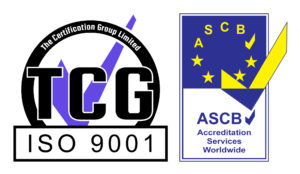Self Leveling Screed
What is self leveling screed and how do you use it?
Hi, my name is Andy Parkin and I am the Managing Director of the Multi-Award Winning British Company, Speed Screed. Today I want to look at what self leveling floor screed is and how it is used.
Self levelling screed and its applications
If you want to form a level surface self levelling screed is an essential part of the process. It forms a smooth, flat and stable layer upon which you can lay the final floor covering. Self leveling screed can support tiles, stone, wood, laminate, vinyl and carpet floor coverings. It is also perfect to use if you are installing an underfloor heating system and need to safely and securely encase the pipework.
In this example we will define self levelling screed as the ready pumpable variety, rather than the thin smoothing compounds. These pumpable screeds can be either calcium sulphate or cement based products.
Once it arrives the screed can be pumped out or poured onto the base layer. Buying a ready-mixed variety of screed is often the better option; it is less labour intensive, economical, easy to apply and also removes any potential mixing errors particularly if you are not used to working with this type of material.
How to lay self leveling screed
It is always wise to contact an expert before screeding any larger areas and particularly if you are installing underfloor heating. Over time there has been a movement towards using ready-mixed screed for all the reasons mentioned above.
The whole purpose of self leveling screed is to provide a smooth finish by levelling out the existing floor. This applies for floor bases already in situ or those which have been freshly laid. Although they are called self leveling screeds there is still a need to manually assist the process. Therefore, once the screed is applied it should be finished with a dapple bar.
Self levelling screed can be applied bonded direct to the base layer or unbonded on to a damp proof membrane. It is routinely used as a floating application to secure hot water pipes in underfloor heating systems.
Drying times can vary according to the brand of screed but for most you will need to leave approximately 1 day per mm of screed up to 40mm and 2 days per mm there after for calcium sulphate screeds. There are fast drying options which in the right conditions can dry within 14-21 days. However, don’t be tempted to lay your final floor covering before the screed is fully dry – this can lead to damage to the flooring and will reduce the durability and longevity of the final floor.
If you need help or advice about a flooring project or just more information about self leveling screed our helpful team is available to take your calls. We are happy to give help, advice and information to make sure you get the best possible results.
Our Accreditations
About Speed Screed
Speed Screed Limited was founded on the key principle of providing first-class customer service. It has since built itself an impressive reputation for delivering high-quality projects across the United Kingdom Floor Screed.
The company’s success is built on its belief in quality work, attention to detail, on-time completion, strong working partnerships and the recruitment of top-level staff. about us >








